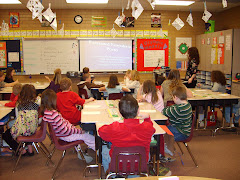My lesson plan is based on the three different types of faults that cause earthquakes and how they affect the Earth's surface. This lesson plan can be adapted to support the Piagetian constructivist learning principles. For example, taking into account Piaget's stages of cognitive development allows us to consider what the 5th graders will be able to understand about this particular concept. Fifth grade falls under the concrete operational stage, and while not all children develop at an exact rate, it is still most likely that the majority of students will be at this stage. Thinking about the characteristics of this stage will help us understand how the students will respond to the lesson. For example, in the concrete operational stage, children understand reversibility, so if I wanted to first show the students a picture of the aftermath of an earthquake, the students would be able to think backward from the end result to the beginning (the earthquake). Also, in the concrete operational stage students are able to classify, which is important because the lesson asks the students to be able to distinguish the characteristics of each type of fault and classify them as either a lateral fault, a reverse fault, or a normal fault. By looking at Piaget's stages of cognitive development, we understand more about the students we want to teach.
Although this helps us better understand our students, it is not enough. Every student learns in ways that are specific to them. In other words, there is a uniqueness of individual learning that always exists for each student that is in a classroom. This is why it is important to learn about each individual student and what helps them most to learn and understand content. In order to facilitate learning about the content of the types of earthquakes, I would make sure that the students have an experience that involves action. This lesson already has an activity like this in it; it uses hand movements to help the students understand what the types of faults look like. This activity helps the students be involved in the discovering of new information. Another important factor to learning when using the developmental cognitivism approach is the necessity of social interaction. Interacting with others is important because it helps us construct our knowledge in a social context. This particular lesson plan does not take into account this need, so I would modify it by having the students quiz each other on the types of faults. They could model with their hands and their partner could tell them which fault they were modeling. They could also work together as pairs to come up with lists of characteristics that each fault has. This would be a way to incorporate social interaction into the lesson.
There are other concepts of developmental cognitivism that are beneficial to consider when thinking about this approach. For example, it may be necessary that students adapt their previous thoughts about earthquakes when they learn new information. This could happen if students thought that earthquakes only happen suddenly without any warning. The conflict of previous knowledge and new knowledge that the student is experiencing is called disequilibrium. By realizing that the types of faults determine how an earthquake will happen, they will adapt their thinking to fit the new information. When the student realizes that their previous knowledge does not help them understand the new information, that is when they use assimilation to fit their their thinking with the new information. They students adapt their earthquake schema, or organized systems of thinking, to fit into what they have just learned. Also, this lesson can incorporate guided discovery learning to help students learn and adapt to the new information. This could be done by having the teacher not do so much direct instruction, but instead allow the students to notice the characteristics of each fault type and to come up with conclusions on their own. These are some of the ways this lesson can be descirbed from a cognitive development point of view.
Technology In The Classroom
16 years ago

No comments:
Post a Comment